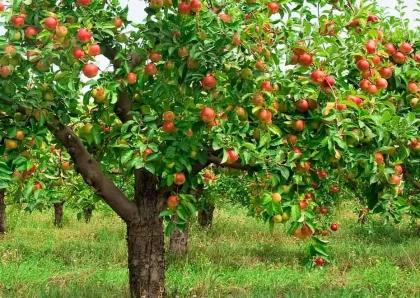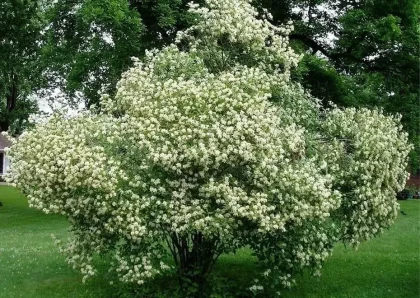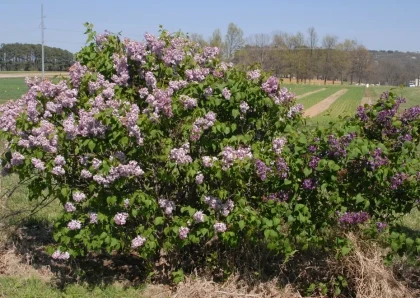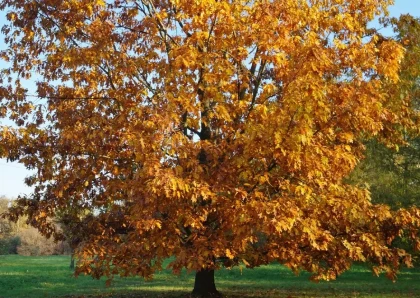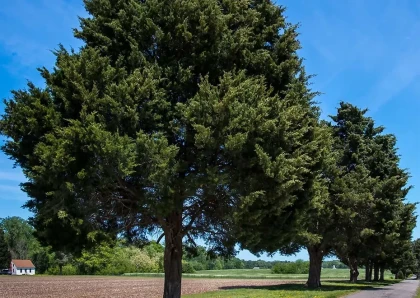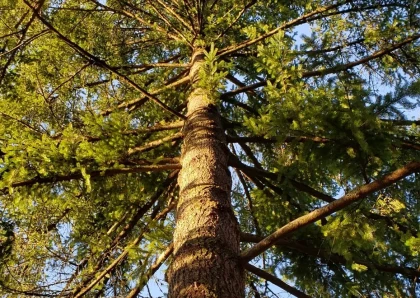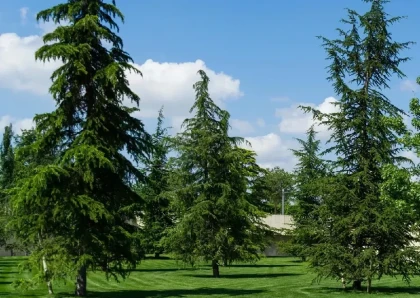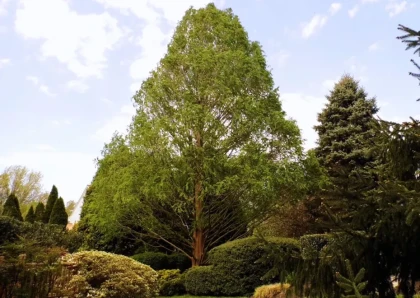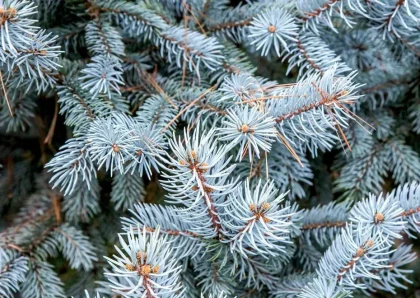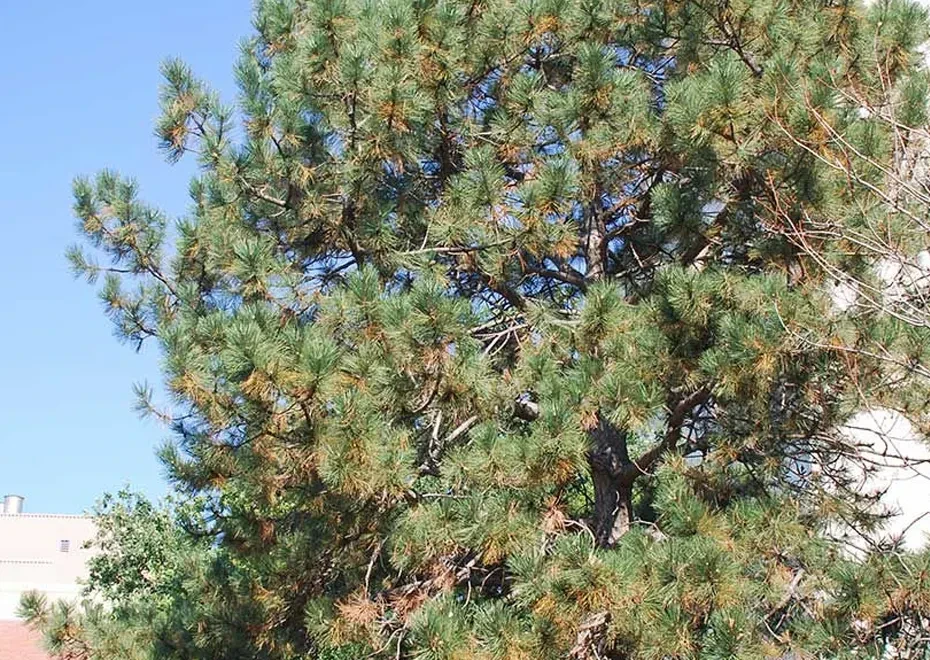
Austrian Pine Tree
Overview
Description
The Austrian Pine (Pinus nigra) is a species of evergreen coniferous tree native to Europe. It belongs to the Pinaceae family and is one of the most widely distributed pine species in Europe. The tree's name, "Austrian Pine," comes from the fact that it was first identified and described in Austria.
Characteristics of the Austrian Pine tree:
- Size: Austrian Pines are large trees that can grow up to 50 to 100 feet (15 to 30 meters) tall, with a spread of about 20 to 40 feet (6 to 12 meters).
- Needles: The needles are dark green, stiff, and often twisted, and they grow in pairs, measuring around 3 to 5 inches (7.5 to 12.5 cm) in length.
- Cones: The cones of the Austrian Pine are relatively small, measuring around 2 to 3 inches (5 to 7.5 cm) in length. They start off green and turn brown as they mature.
- Bark: The bark of mature trees is dark gray to black and develops deep fissures and furrows.
- Growth rate: Austrian Pines have a moderate to fast growth rate.
- Hardy and adaptable: These trees are known for their hardiness and adaptability to various soil types and climatic conditions. They can tolerate drought and withstand a wide range of temperatures.
- Landscaping use: Austrian Pines are often used in landscaping due to their attractive form and dark green needles. They can be seen in parks, gardens, and along roadsides.
- Ecological role: In their native habitat, Austrian Pines play an essential role in forest ecosystems, providing habitat and food for various wildlife species.
Considerations:
It's worth noting that while the Austrian Pine is popular for its landscaping qualities, in some regions, it is considered an invasive species due to its ability to outcompete native vegetation and negatively impact local ecosystems. As with any non-native species, it is crucial to consider its potential impact before planting Austrian Pines in certain areas.
Types of Austrian Pine Tree
Pinus nigra 'laricio'
Pinus nigra 'laricio', commonly called Corsican Pine, is found in southern Europe, particularly Corsica, Italy, and Sicily. It has long, slender needles and a more pyramidal shape compared to the typical subspecies. Corsican Pine is also used in reforestation and ornamental planting.
Pinus nigra 'pallasiana'
Pinus nigra 'pallasiana', known as the Crimean Pine or Pallas' Pine, is native to regions around the Black Sea, including Crimea, Turkey, and the Caucasus. It has longer needles and a more open canopy than the other subspecies. This type of Austrian Pine is appreciated for its ornamental value.
Pinus nigra 'salzmannii'
Pinus nigra 'salzmannii', also called the Salzmann's Pine, is native to the western Mediterranean region, including Spain and Algeria. It has stout needles and a more irregular crown shape. Salzmann's Pine is utilized for timber production and afforestation projects.
Pinus nigra 'caramanica'
Pinus nigra 'caramanica', known as the Sicilian Pine, is native to Sicily and southern Italy. It has short, dark green needles and is well-suited for coastal planting due to its salt tolerance. The Sicilian Pine is often used in urban landscaping and windbreaks.
Various Wood Products from Austrian Pine Trees
Lumber
Austrian Pine wood is used to produce lumber for construction purposes. It is utilized in building frameworks, roof trusses, and other structural components.
Furniture
The wood from Austrian Pine is used in crafting furniture items such as tables, chairs, cabinets, and bookshelves. Its attractive grain patterns make it suitable for both indoor and outdoor furniture.
Flooring
Austrian Pine wood is processed into flooring materials, offering a warm and natural look to homes and commercial spaces.
Paneling
The wood is used for wall and ceiling paneling, providing a rustic and cozy ambiance to interior spaces.
Doors and Windows
Austrian Pine wood is utilized in the construction of doors and windows, providing strength and durability to these essential elements of a building.
Moldings and Trim
The wood is used for moldings and trim work, adding decorative details to doors, windows, and walls.
Cabinetry
Austrian Pine wood is popular for crafting kitchen and bathroom cabinets due to its appealing appearance and robustness.
Pallets and Crates
The wood is utilized in the production of pallets and crates for transporting goods due to its strength and affordability.
Paper and Pulp
Austrian Pine wood can be used in the paper and pulp industry to produce various paper products.
Outdoor Structures
It is employed in constructing outdoor structures such as fences, decks, pergolas, and garden furniture.
The Austrian Pine (Pinus nigra) offers several benefits, including:
Durable Wood
Austrian Pine wood is known for its strength and durability, making it a valuable resource for various construction and woodworking applications.
Wood Products
As mentioned earlier, the wood from Austrian Pine is utilized to produce lumber, furniture, flooring, paneling, doors, windows, moldings, cabinets, pallets, and more.
Attractive Appearance
The wood of Austrian Pine has an attractive grain pattern, making it suitable for both indoor and outdoor furniture and adding aesthetic value to any project.
Shade and Windbreaks
Austrian Pine trees are often planted for their ability to provide shade in landscapes and act as windbreaks, protecting surrounding areas from strong winds.
Wildlife Habitat
These trees serve as habitat and nesting sites for various wildlife, including birds and small mammals.
Soil Erosion Control
Austrian Pine trees have extensive root systems that can help stabilize soil on slopes, reducing erosion risks.
Carbon Sequestration
Like all trees, Austrian Pines absorb carbon dioxide from the atmosphere and store carbon, contributing to efforts to mitigate climate change.
Aesthetics and Landscaping
The evergreen nature of Austrian Pine makes it a popular choice for landscaping, providing year-round greenery and enhancing the beauty of parks, gardens, and private properties.
Shelter for Wildlife
The dense foliage of Austrian Pine trees provides shelter for wildlife during harsh weather conditions.
Adaptability
Austrian Pines are adaptable to various soil types and can thrive in different climates, making them suitable for a wide range of regions.
Timber Production
Due to their fast growth rate, Austrian Pines can be a valuable source of timber for commercial purposes.
Noise Reduction
Trees, including Austrian Pines, can help reduce noise pollution by acting as natural sound barriers.
Air Quality Improvement
Trees play a vital role in improving air quality by absorbing pollutants and releasing oxygen during photosynthesis.
Recreation and Aesthetics
Austrian Pine forests offer opportunities for recreational activities such as hiking, camping, and birdwatching, while also enhancing the aesthetic appeal of the landscape.
Biodiversity Support
By providing habitat for various species, Austrian Pine trees contribute to overall biodiversity in their ecosystems.
While Austrian Pine (Pinus nigra) offer several benefits, they also come with some drawbacks and potential cons:
Invasive Potential
In some regions outside their native range, Austrian Pine trees can become invasive and outcompete native plant species, disrupting the local ecosystem.
Disease Susceptibility
Austrian Pine trees are susceptible to various diseases, including Diplodia tip blight and Sphaeropsis shoot blight, which can affect their health and aesthetics.
Insect Pests
Like all trees, Austrian Pines are vulnerable to insect pests, such as bark beetles and sawflies, which can cause damage and lead to tree decline.
Allelopathic Effects
Austrian Pine trees release certain chemicals that can inhibit the growth of other plant species nearby, potentially reducing plant diversity in the surrounding area.
Fire Hazard
The accumulation of pine needles and resinous materials under Austrian Pine trees can create a fire hazard, especially in dry and hot climates.
Messy Dropping
Austrian Pine trees shed needles and cones regularly, which can create a mess on lawns, walkways, and driveways, requiring regular cleanup.
Limited Landscape Use
Due to their large size and dense growth habit, Austrian Pines may not be suitable for small yards or urban landscapes where space is limited.
Aggressive Root System
The root system of Austrian Pine trees can be aggressive and may interfere with nearby structures, pavements, or underground utilities.
Allergenic Potential
Some people may be sensitive or allergic to pollen or other allergens released by Austrian Pine trees, leading to respiratory issues or allergies.
Soil Acidification
Austrian Pine trees prefer acidic soils, and their needle drop can contribute to soil acidification over time, which may negatively impact other plants that prefer neutral or alkaline soils.
Branch Breakage
In windy or stormy conditions, the branches of Austrian Pine trees can be prone to breakage, leading to potential property damage or safety hazards.
Longevity
Compared to some other tree species, Austrian Pines have a relatively shorter lifespan, typically ranging from 50 to 150 years.
Tips for planting and maintaining Austrian Pine Trees
Planting:
Maintenance:
Conclusion
Austrian Pine trees (Pinus nigra) offer a variety of benefits, making them a valuable addition to landscapes and ecosystems. Their durable wood provides essential resources for construction and woodworking industries, while their attractive appearance makes them suitable for both indoor and outdoor furniture. Additionally, Austrian Pine trees play a crucial role in providing shade, windbreaks, and habitat for wildlife, contributing to overall biodiversity. However, it's essential to be aware of the potential cons associated with Austrian Pine trees. They can become invasive in certain regions and may be susceptible to diseases and insect pests, requiring careful monitoring and management. The accumulation of pine needles and resinous materials under the trees can pose a fire hazard, and their messy dropping might require regular cleanup. To ensure successful planting and maintenance, careful consideration of the planting site, proper watering, mulching, and periodic pruning are vital. Moreover, periodic inspection for signs of diseases or pests, along with timely treatments, will contribute to the trees' long-term health and vitality. Overall, Austrian Pine trees can be a beautiful and beneficial addition to landscapes when planted and maintained responsibly, taking into account their specific needs and potential impact on the surrounding environment. Proper management practices and sustainable approaches will help preserve the many advantages these trees provide while minimizing potential drawbacks.
Frequently Asked Questions (FAQs)
1. What are Austrian Pine trees (Pinus nigra)?
Austrian Pine trees, scientifically known as Pinus nigra, are evergreen coniferous trees native to Europe. They are valued for their durable wood and attractive appearance.
2. What are the benefits of planting Austrian Pine trees?
Austrian Pine trees offer several benefits, including providing lumber for construction, crafting furniture, acting as windbreaks, and serving as habitat for wildlife. They also contribute to carbon sequestration and enhance the aesthetics of landscapes.
3. Where should I plant Austrian Pine trees?
Choose a planting site with full sun exposure and well-draining soil. Austrian Pine trees can adapt to various soil types but prefer acidic to neutral pH levels.
4. How far apart should I space Austrian Pine trees when planting?
Ensure enough space for the tree to grow to its mature size. Proper spacing varies depending on the specific variety, but it is generally recommended to provide ample room for their potential height and spread.
5. Do Austrian Pine trees require special care?
Once established, Austrian Pines are generally low-maintenance. Regular watering during the first year after planting, occasional deep watering in dry periods, and timely pruning to remove dead or diseased branches are usually sufficient.
6. Are Austrian Pine trees susceptible to any diseases?
Yes, Austrian Pine trees can be susceptible to diseases such as Diplodia tip blight and Sphaeropsis shoot blight. Regular monitoring and prompt treatment can help manage potential issues.
7. Can Austrian Pine trees become invasive?
In some regions outside their native range, Austrian Pine trees can become invasive and outcompete native plant species. It's essential to consider their impact and consult local experts before planting them.
8. How long do Austrian Pine trees typically live?
Austrian Pines have a relatively shorter lifespan compared to some other tree species, typically ranging from 50 to 150 years.
9. Can I use Austrian Pine wood for woodworking projects?
Yes, Austrian Pine wood is known for its strength and durability, making it suitable for various woodworking applications, including furniture crafting and construction purposes.
10. How do I protect Austrian Pine trees during harsh winters?
In areas with harsh winters or heavy snowfall, consider wrapping young trees with burlap or using tree wraps to protect them from snow and ice damage.
No listings available
Related Products
Golden Jubilee Peach Tree
Prunus persica 'Golden Jubilee' is a specific cultivar of peach tree. It is a deciduous fruit tree belonging to the Rosaceae family. 'Golden Jubilee'...
Gray Dogwood
Cornus racemosa, commonly known as the gray dogwood or northern swamp dogwood, is a deciduous shrub native to eastern North America. It belongs to...
Common Fragrant Lilac
Syringa vulgaris, commonly known as the Common Lilac or French Lilac, is a deciduous shrub belonging to the genus Syringa in the olive family...
European Beech Tree
The European Beech (Fagus sylvatica) is a deciduous tree species native to much of Europe, including parts of western Asia. It is one of...
Emerald Arborvitae Tree
The Emerald Arborvitae (Thuja occidentalis 'Smaragd') is a popular evergreen tree or shrub in landscaping and gardening. It belongs to the cypress family (Cupressaceae)...
Eastern Red Cedar Tree
The Eastern Red Cedar, scientifically known as Juniperus virginiana, is a species of evergreen tree native to eastern North America. It belongs to the...
Douglas Fir Tree
The Douglas Fir (Pseudotsuga menziesii) is an evergreen coniferous tree that belongs to the Pinaceae family. It is one of the most common and...
Deodar Cedar Tree
The name "Deodar" is derived from the Sanskrit words "deva" (meaning "god") and "daru" (meaning "wood" or "tree"), hence it is often referred to...
Dawn Redwood Tree
The Dawn Redwood tree, scientifically known as Metasequoia glyptostroboides, is a deciduous coniferous tree that belongs to the family Cupressaceae. It is a unique...
Colorado Blue Spruce Tree
The Colorado Blue Spruce, scientifically known as Picea pungens, is a species of coniferous tree belonging to the Pinaceae family. It is native to...




